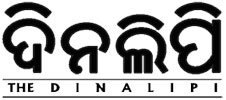THE escalating costs and opaque financial practices surrounding India’s electoral process raise concerns about the erosion of democratic principles. Over the past two decades, this trend has caught up with both Central and State governments spending a lot on advertisements before elections to the Lok Sabha and State Legislative Assemblies.
In a democratic country, it is essential for a government to spread awareness about its schemes and policies. In the first few decades in independent India, this was primarily done through public meetings. In the last three decades, awareness has been spread through advertisements on print and electronic media, which have a wide reach. However, at present, government advertisements published or broadcast before elections tend to be campaigns of the ruling party and establish personality cults.
According to the Information and Broadcasting Ministry, the Central government had spent ₹3,020 crore on advertisements between 2018-19 and 2022-23. It must be noted that the amount spent was significantly higher at ₹1,179 crore during the election year of 2018-19 as against ₹408 crore in 2022-23. This expenditure is likely to rise in 2023-24 as the general elections are due in April-May.
The Supreme Court through its orders in May 2015 and March 2016 laid down guidelines for the regulation of government advertisements. Even then, ruling governments have an advantage before elections when it comes to publishing advertisements that disturb the level playing field.
Recently, the expenditure limit for candidates for Lok Sabha constituencies was increased from Rs.54 lakh-Rs.70 lakh (depending on states) to Rs.70 lakh-Rs 95 lakh by the Election Commission of India (ECI). Further, the spending limit for Assembly constituencies was hiked from Rs 20 lakh-Rs 28 lakh to Rs 28 lakh- Rs 40 lakh (depending on states).
In 2020, the ECI had formed a committee to study the election spending limit. The enhanced amount of Rs 40 lakh would apply in Uttar Pradesh, Uttarakhand and Punjab and Rs.28 lakh in Goa and Manipur. Apart from a 10% increase in 2020 due to the Covid-19 pandemic, the last major revision in spending limits for candidates was carried out in 2014.
The committee found that there has been an increase in the number of electors and Cost Inflation Index since 2014 substantially.
What is cost inflation index?
It is used to estimate the increase in the prices of goods and assets year-by-year due to inflation. It is calculated to match the prices to the inflation rate. In simple words, an increase in the inflation rate over time will lead to a rise in the prices.
Cost Inflation Index = 75% of the average rise in the Consumer Price Index (urban) for the immediately preceding year. Consumer Price Index compares the current price of a basket of goods and services (which represent the economy) with the cost of the same basket of goods and services in the previous year to calculate the increase in prices. The Central Government specifies CII by notifying in the official gazette.
Election Expenditure Limit:
It is the amount an election candidate can legally spend for their election campaign and has to account for, which includes expenses on public meetings, rallies, advertisements, posters, banners, vehicles and advertisements. Under Section 77 of the Representation of the People Act (RPA), 1951, every candidate shall keep a separate and correct account of all expenditure incurred between the date on which they have been nominated and the date of declaration of the result.
All candidates are required to submit their expenditure statement to the ECI within 30 days of the completion of the elections. An incorrect account or expenditure beyond the cap can lead to disqualification of the candidate by the ECI for up to three years, under Section 10A of RPA, 1951. The limit prescribed by the ECI is meant for legitimate expenditure because a lot of money in elections is spent for illegitimate purposes.
It has often been argued that these limits are unrealistic as the actual expenditure incurred by the candidate is much higher. In December 2019, a private member’s bill was introduced in the Parliament which intended to do away with the cap on election spending by candidates.
The move was taken on the grounds that the ceiling on election expenses ends up being counterproductive by encouraging candidates to under-report their expenditure. There is no cap on a political party’s expenditure, which is often exploited by candidates of the party.
However, all registered political parties have to submit a statement of their election expenditure to the ECI within 90 days of the completion of the elections.
Recommendations on State Funding:
Indrajit Gupta Committee (1998): It suggested that state funding would ensure a level playing field for poorer political parties and argued that such a move would be in public interest. It also recommended that state funds should only be given to recognised national and State parties and funding should be given in the form of free facilities provided to these parties and their candidates.
Law Commission Report (1999): It stated that a state funding of elections is ‘desirable’ provided that political parties are prohibited from taking funds from other sources. National Commission to Review the Working of the Constitution (2000): It did not support the idea but mentioned that an appropriate framework for the regulation of political parties needs to be implemented before state funding is considered.
State Funding of Elections: In this system, the states bear the election expenditure of political parties contesting the Election. This can bring transparency in the funding process as public finance can limit the influence of interested donors’ money and thereby help curb corruption.




Comments are closed, but trackbacks and pingbacks are open.